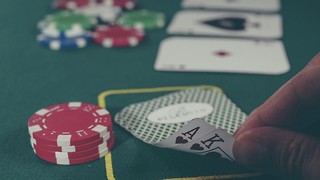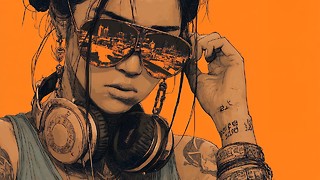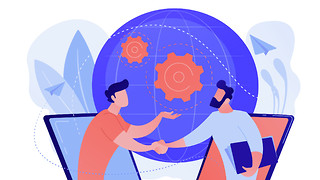Four days in North Korea: part six

Our coach took us back to Pyongyang where we were given a tour of the USS Pueblo, an American warship that the North Koreans captured in 1968 after it supposedly strayed into their waters. Now moored along the Taedong River in the centre of Pyongyang, it is the only US Navy ship held in captivity. We were shown the bullet holes in the ship where the crew “attempted to resist”; 82 crew members were arrested by the North Koreans and one died. Their commander wrote an apology letter but, aware of the dictionary translation their captors would use, undermined them with his use of eccentric diction, writing: “we paean the DPRK. We paean the Korean people. We paean their great leader Kim Il-sung”. While imprisoned their photos were constantly taken for the sake of propaganda and the crew subverted these by subtly giving the camera the middle finger. When questioned what this meant they explained it was the “Hawaiian Good Luck sign”. After an official apology from the US government, the crew was released 11 months later and permitted to cross the Bridge of No Return into South Korea.
We take a ride on the Metro, and at an average depth of 110m, it is the world’s deepest underground rail network, with steel doors as a testament to its ulterior purpose as a bomb shelter. It took over two and a half minutes on the escalator to reach the level of the trains, long enough that we saw people sprawling across the steps on the other side. We descended into the depths of Pyongyang with nationalistic anthems playing over tinny speakers and the ceiling above us glowing an eerie shade of blue. Some people smiled and waved while the majority averted their gaze; for a country completely isolated from the rest of the world it was surprising that in Pyongyang we received less attention than we did in the larger Chinese cities.
It cannot be denied that the Pyongyang Metro, or at least the fraction we saw, is a very classy system. Softly lit arches line the platform, large murals of the Great Leader adorn the walls and ornate and colourful chandeliers hang from the ceiling like fireworks. As the green ex-East German trains rattle into the station, uniformed signal ladies direct the train and people read the newspaper from brass displays; there is an old-style charm and simplicity to the place. The Pyongyang Metro can easily boast of being the cheapest underground network in the world too, with a single ticket for any distance costing ~0.3p.
Boarding the coach again, we drove through Pyongyang on a tour of monuments until we passed Kim Il-sung Square, where we saw thousands of children rehearsing a routine for Liberation Day. We alighted from the bus and were allowed to watch from across the road. Every child carried a wooden cut-out of a lit torch in the style of one of Pyongyang’s tallest monuments, the Tower of the Juche Idea. A man at the front bellowed instructions over a megaphone, to which the children would crouch, stand up, move into lines, form letters from the Hangul alphabet or yell, all with military precision. It was an impressive display in front of a recognisable landmark, and we felt lucky to have chanced upon it.

We had no idea what to expect for the third day. Our original itinerary had suggested we would be visiting the International Friendship Exhibition but poor weather meant the route up to Mount Myohyang was impassable. A staple of tours to North Korea, the Friendship Hall is a large museum housing all the gifts received by Kim Il-sung and Kim Jong-il from foreign dignitaries. There are over 150 rooms full of presents, with China and the Soviet Union being the most generous, but the vast majority of these presents are a little odd. Tacky lamps and ashtrays abound, there is a chessboard from Gaddafi and an armoured train car from Mao, while a political group from Nicaragua gifted a stuffed crocodile proffering wooden cups on a tray. In some ways, I’m relieved that we weren’t able to visit as solemn respect is expected and in the face of an “alligwaiter”, I’m not quite sure I could have mustered that.
Instead, we drove southwest for an hour and a half to the city of Nampo at the mouth of the Taedong River. Normally reserved for those on five-day packages, we visited the West Sea Barrage, an engineering feat of which the North is very proud. Despite this, our guide didn’t really know what it was for. An 8km-long series of dams, the barrage manages the height of the river to avoid flooding in Pyongyang and separates fresh water from the sea so that it may be used for farming. As fascinating as this may be to engineers, the site lacks general appeal and our visit was mercifully short. We were permitted to take photos of the dam and then we were led inside straight away to watch a propaganda-ridden video, in which we learnt that Kim Il-sung personally directed the dam’s construction and advised the engineers. It also featured some rather funky Victorian deep-sea diving outfits… in use in the late 1980s. All of a sudden the TV switched itself off and the room fell silent. The guides panicked and ushered us quickly out of the room, trying to maintain the ever-present façade of flawlessness, before we resumed watching the film in another room. I could have guessed the ending, though: the dam was built successfully thanks to Kim Il-sung.
The return journey provided a good opportunity for the Chinese members of our tour party to interrogate their guide. Having been in the country for three days now, their confidence had grown and they were going to make the most of these 90 minutes by putting their guide on the spot. One of the Chinese tourists asked, “do you still kill defectors who are sent back?”. The guide said that they, “do not do that anymore,” and admitted that times had been harsher than they are now. Another dared, “what happens to gay people in North Korea?”. To paraphrase his response: “there is a natural progression in North Korea. You go to school, you do your military service, you get a job and then you marry. There is no homosexuality because people do not have sex before marriage and so do not get bored.” Through all of this we sat, clueless, at the back of the bus, awaiting the translated summary from our Hong Kong friends later in the evening. We had an inkling that the Chinese were posing tricky questions, though, since Ms Ba remained taciturn throughout and never offered to interpret. After a heated exchange between the Chinese tourists and their guide, with a mix of intense shouting and laughing, we asked Ms Ba what they were saying. She simply replied: “we’ll be having lunch at one o’clock”.
To read earlier instalments:
Part One http://www.varsity.co.uk/lifestyle/4842
Part Two http://www.varsity.co.uk/lifestyle/4844
Part Three http://www.varsity.co.uk/lifestyle/4845
Part Four http://www.varsity.co.uk/lifestyle/5906
Part Five http://www.varsity.co.uk/lifestyle/6012
 News / Meta opens £12 million lab in Cambridge 11 July 2025
News / Meta opens £12 million lab in Cambridge 11 July 2025 Lifestyle / Reflections on rowing10 July 2025
Lifestyle / Reflections on rowing10 July 2025 News / Write for Varsity this Michaelmas13 July 2025
News / Write for Varsity this Michaelmas13 July 2025 Features / How to catch a coat thief13 July 2025
Features / How to catch a coat thief13 July 2025 Comment / What is originality, anyway? 14 July 2025
Comment / What is originality, anyway? 14 July 2025








